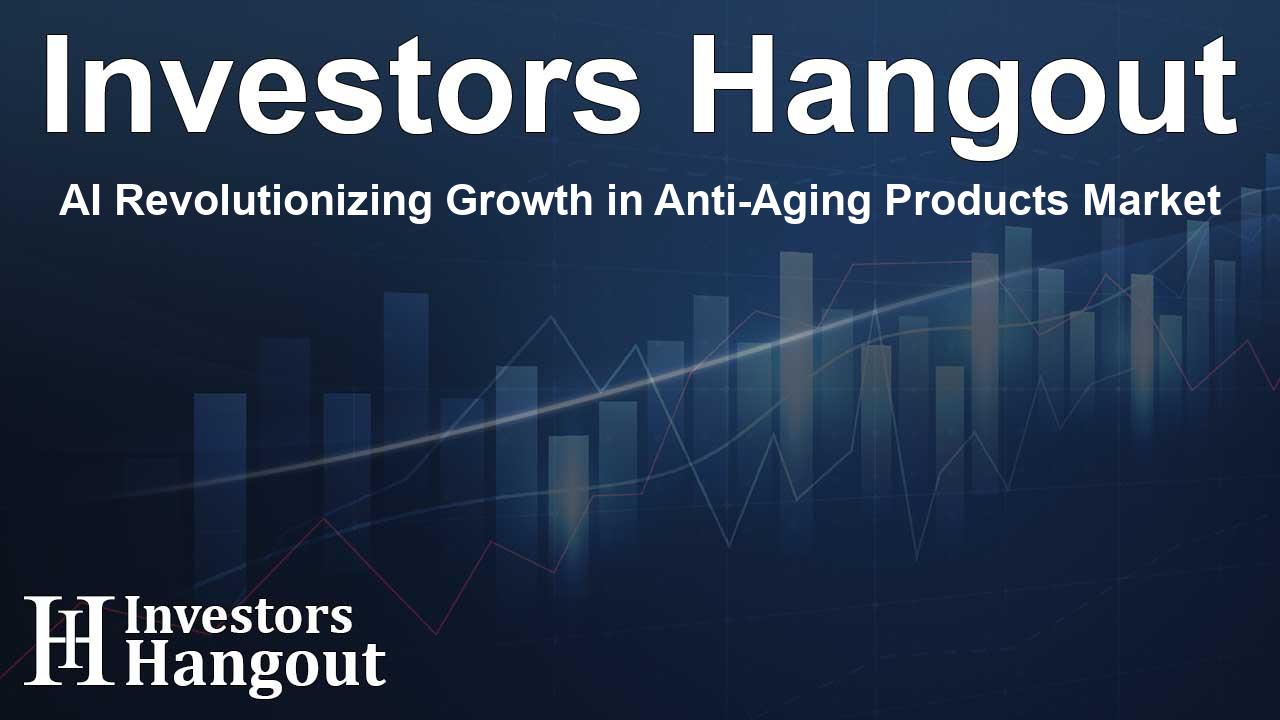AI Revolutionizing Growth in Anti-Aging Products Market

AI Revolutionizing Growth in Anti-Aging Products Market
The Global Anti-Aging Products Market is poised for substantial expansion, anticipated to increase by USD 20.6 billion from 2024 to 2028, according to recent insights. This growth trajectory reflects a compound annual growth rate (CAGR) of 6.6% during this period. The rising aging population is pivotal to this trend, as more individuals seek solutions to address age-related concerns. Furthermore, with the growing preference for online shopping, a significant portion of this market's growth is fueled by digital sales channels.
Key Market Drivers and Challenges
Market Drivers
The surge in online sales has dramatically changed how consumers access anti-aging products. Over the years, there has been a notable uptick in the number of middle-aged internet users championing e-commerce, with a significant percentage engaging directly with manufacturers' websites. Companies such as L'Oreal are leveraging this trend by offering popular products online, including the REVITALIFT range, directly to their customers. Online platforms, including major retailers and e-commerce giants, are creating broader access to products, fostering a competitive landscape that benefits consumers seeking convenient options.
Market Challenges
While consumer interest continues to rise, pricing remains a formidable barrier to purchasing these products. The costs associated with high-quality ingredients and innovative formulations often lead to premium price tags. Not to mention, the expenses associated with marketing and product development, coupled with the costs of advanced treatments, can be disheartening for potential buyers. The market is witnessing a growing demand for reasonably priced alternatives that do not compromise quality. As high-cost items face scrutiny, the challenge lies in making effective anti-aging solutions accessible without compromising on efficacy.
Market Segmentation and Insights
The anti-aging products market encompasses various categories, crucial for targeted growth strategies. Key segments include:
- End-user: This includes customers from skincare and hair care sectors, reflecting diverse consumer needs.
- Distribution Channel: The market can be further divided into supermarkets, pharmacies, specialty stores, and online platforms, highlighting the importance of e-commerce.
- Geography: With regions spanning North America, Europe, APAC, Latin America, and the Middle East, the global nature of this market underscores its ubiquity.
Innovative Trends Shaping the Market
As the beauty industry evolves, so does the formulation of anti-aging products. Consumers increasingly favor multi-functional products that pack multiple benefits into a single use. This move towards simplicity in skincare routines reflects changing consumer priorities and lifestyles. Not only do these innovative products help address aging concerns, but they also cater to specific skin types and relate to personal preferences, ensuring that a wide variety of needs are met. Companies are responding to this trend by refining their offerings with natural ingredients, organic extracts, and advanced scientific formulations designed to achieve visible results.
About Technavio and Market Research
Technavio operates at the forefront of technology research and offers critical insights into market trends. With an extensive library of reports, their analytics assist businesses in identifying opportunities and navigating market dynamics effectively. Their analysis provides actionable strategies based on comprehensive data collection and research methodologies. As the anti-aging products market expands due to demographic shifts and changing consumer preferences, Technavio continues to highlight the importance of AI and innovations that shape competitive landscapes.
Frequently Asked Questions
1. What is driving the growth of the Anti-Aging Products Market?
The growth is primarily driven by an increasing aging population, rising demand for online accessibility, and evolving consumer preferences towards innovative products.
2. What challenges does the Anti-Aging Products Market face?
High costs associated with quality ingredients and treatments pose significant challenges, limiting accessibility for some consumers.
3. How is AI influencing the Anti-Aging Products Market?
AI is facilitating better consumer understanding and product personalization, leading to targeted marketing and improved consumer engagement.
4. What are the major distribution channels for anti-aging products?
Key distribution channels include online retail, supermarkets, pharmacies, and specialty stores, with a growing emphasis on e-commerce.
5. Why is Technavio significant for market research?
Technavio's insights provide businesses with valuable data to adapt to evolving market trends and make informed decisions to capitalize on growth opportunities.
About Investors Hangout
Investors Hangout is a leading online stock forum for financial discussion and learning, offering a wide range of free tools and resources. It draws in traders of all levels, who exchange market knowledge, investigate trading tactics, and keep an eye on industry developments in real time. Featuring financial articles, stock message boards, quotes, charts, company profiles, and live news updates. Through cooperative learning and a wealth of informational resources, it helps users from novices creating their first portfolios to experts honing their techniques. Join Investors Hangout today: https://investorshangout.com/
Disclaimer: The content of this article is solely for general informational purposes only; it does not represent legal, financial, or investment advice. Investors Hangout does not offer financial advice; the author is not a licensed financial advisor. Consult a qualified advisor before making any financial or investment decisions based on this article. The author's interpretation of publicly available data shapes the opinions presented here; as a result, they should not be taken as advice to purchase, sell, or hold any securities mentioned or any other investments. The author does not guarantee the accuracy, completeness, or timeliness of any material, providing it "as is." Information and market conditions may change; past performance is not indicative of future outcomes. If any of the material offered here is inaccurate, please contact us for corrections.